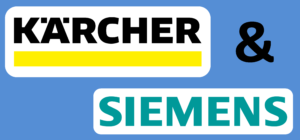 As part of our van full of nerds tour through southern Germany to study Industry 4.0, we also visited two companies, Kärcher and Siemens. Siemens is probably well known to all of you. We went to their Amberg plant where they make programmable logic controllers. Kärcher is a smaller company that makes pressure washers and industrial cleaning machines. Let me show you what we found.
As part of our van full of nerds tour through southern Germany to study Industry 4.0, we also visited two companies, Kärcher and Siemens. Siemens is probably well known to all of you. We went to their Amberg plant where they make programmable logic controllers. Kärcher is a smaller company that makes pressure washers and industrial cleaning machines. Let me show you what we found.
Kärcher Plant in Winnenden
The Plant
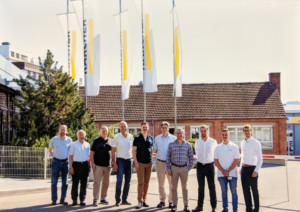 Kärcher is THE brand in Germany if you need any type of pressure washer or industrial cleaning device. From small handheld pressure washers for home use, to powered carts for industrial indoor and outdoor use, to specialized tools like ultra-high-pressure 4000psi washers to “wash the concrete off the rebar” during deconstruction and maintenance. I personally own their Window Vac to clean my windows. The family-owned company has around 13,000 people worldwide, of which 2,000 work in the headquarters in Winnenden, where they assemble mostly floor scrubbers and scrubber dryers, as well as do testing.
Kärcher is THE brand in Germany if you need any type of pressure washer or industrial cleaning device. From small handheld pressure washers for home use, to powered carts for industrial indoor and outdoor use, to specialized tools like ultra-high-pressure 4000psi washers to “wash the concrete off the rebar” during deconstruction and maintenance. I personally own their Window Vac to clean my windows. The family-owned company has around 13,000 people worldwide, of which 2,000 work in the headquarters in Winnenden, where they assemble mostly floor scrubbers and scrubber dryers, as well as do testing.
Lean Aspects
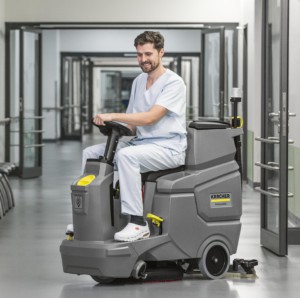 The factory itself had, in my opinion, a good and clear material flow and structure, and I considered this to be a not outstanding but good lean factory (although one of the nerds in the tour disagreed with that). As far as Industry 4.0 goes, it is much less so. The high-volume, low-mix line is considered their “Industry 4.0” line and uses Pick by Light and digital instructions. I estimated the value-added time of their workers at around 50%–55%, which is pretty good considering the low cycle time and high variety. The lot size is one. Even if there are larger orders, they found it better for the system to distribute them into lot sizes of one. While mostly running in two full shifts, if demand is lower, a half-sized team at the night shift can use pre-assembled parts from the feeder-line buffers. The feeder lines work faster, and produce in one shift what the main line consumes in two shifts.
The factory itself had, in my opinion, a good and clear material flow and structure, and I considered this to be a not outstanding but good lean factory (although one of the nerds in the tour disagreed with that). As far as Industry 4.0 goes, it is much less so. The high-volume, low-mix line is considered their “Industry 4.0” line and uses Pick by Light and digital instructions. I estimated the value-added time of their workers at around 50%–55%, which is pretty good considering the low cycle time and high variety. The lot size is one. Even if there are larger orders, they found it better for the system to distribute them into lot sizes of one. While mostly running in two full shifts, if demand is lower, a half-sized team at the night shift can use pre-assembled parts from the feeder-line buffers. The feeder lines work faster, and produce in one shift what the main line consumes in two shifts.
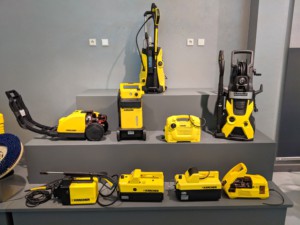 The lower-volume, high-mix lines don’t really use Pick by Light or digital instructions. All lines used an Andon (although mounted in a way so that visitors can’t see it as per agreement with the unions). The plant has the ability to produce many thousands of variants, although the Industry 4.0 line is assigned to only around 85,000 variants. The team structure is nice and small, with around 6 people for every shift leader. They are trying to establish a central database to collect production data, but are handicapped by different MES systems at different machines. Unsurprisingly for a company specializing in cleaning products, the plant looked clean 🙂 .
The lower-volume, high-mix lines don’t really use Pick by Light or digital instructions. All lines used an Andon (although mounted in a way so that visitors can’t see it as per agreement with the unions). The plant has the ability to produce many thousands of variants, although the Industry 4.0 line is assigned to only around 85,000 variants. The team structure is nice and small, with around 6 people for every shift leader. They are trying to establish a central database to collect production data, but are handicapped by different MES systems at different machines. Unsurprisingly for a company specializing in cleaning products, the plant looked clean 🙂 .
Overall nice but not very computerized … but this is fine by me. It is completely justified NOT to use Pick By Line if you have a high-variety, low-volume production and each “pick” box costs 50€ just for the gear, not to mention the effort of setting it up. Don’t use computers just because it is possible to do so; use them when it is the best solution for your case.
Industry 4.0 Aspects
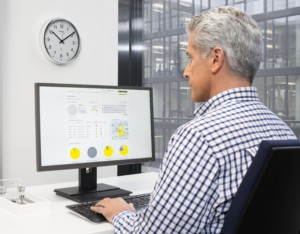 What I liked much more was the use of modern networking technology in their products. Most of their larger machines include a worldwide data SIM card, allowing them to do all kinds of tricks like tracking (Is you employee using your machines to clean somewhere else for his own profit on the side?); prevent this through Geo-Fencing (won’t start outside of a permitted area); remote maintenance and diagnostics (Time for new brushes?); battery information (Do you need to charge?); and even location detection and prevention of starting the machine (one machine stolen in Europe was located in Morocco, shut down, and with the help of the local police brought back to its rightful owner). Their machines with a SIM card can do pretty much everything a mobile phone can do.
What I liked much more was the use of modern networking technology in their products. Most of their larger machines include a worldwide data SIM card, allowing them to do all kinds of tricks like tracking (Is you employee using your machines to clean somewhere else for his own profit on the side?); prevent this through Geo-Fencing (won’t start outside of a permitted area); remote maintenance and diagnostics (Time for new brushes?); battery information (Do you need to charge?); and even location detection and prevention of starting the machine (one machine stolen in Europe was located in Morocco, shut down, and with the help of the local police brought back to its rightful owner). Their machines with a SIM card can do pretty much everything a mobile phone can do.
Overall, most of us (including me) liked the plant for having a level head and good common sense on what to do and what not to do.
Siemens Plant in Amberg
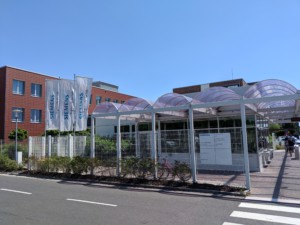 The Siemens plant in Amberg is well known for its Industry 4.0 implementation and has won multiple awards, including the 2018 Industry 4.0 award for smart factory. It produces programmable logic controllers (e.g., the SPS7) and is widely known for its Industry 4.0 approach. They make 60,000 products per day in 120 variants, having around 350 changeovers per day. Their defect rates are around 10 dpmo (defects per million opportunities) (not to be confused with the more stringent measure of parts per million PPM).
The Siemens plant in Amberg is well known for its Industry 4.0 implementation and has won multiple awards, including the 2018 Industry 4.0 award for smart factory. It produces programmable logic controllers (e.g., the SPS7) and is widely known for its Industry 4.0 approach. They make 60,000 products per day in 120 variants, having around 350 changeovers per day. Their defect rates are around 10 dpmo (defects per million opportunities) (not to be confused with the more stringent measure of parts per million PPM).
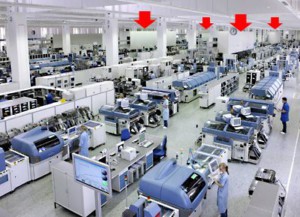
The special feature of this plant is their underground material supply system. The material transport from the warehouse is in the basement. On the shop floor there are 9 large towers, which are an intermediate storage and also the connection between the automated material flow in the basement and the production on the shop floor (four of them are visible here in the press photo). Material can be moved automatically from any tower to any other tower or the warehouse, as decided by the order management system. On the shop floor the material is moved from and to the towers mostly by hand. It takes in average only ten minutes for requested material to arrive, and no more than twenty-five minutes in the worst case. In case of short-term changes in the production program, the system can deliver material for a new production job in very short notice.
These towers are also decoupling points between the SMD soldering lines and the final assembly. This allows focus on utilization for the SMD soldering and focus on customer orders on the final assembly, improving the flexibility of the production system. This results in a 99.5% delivery reliability.
The machines themselves can also be moved flexibly, and there are many prepared covered openings in the floor that can be opened up quickly to provide the machine with data, power, air, gas, and whatever it needs. About 25% of the machines are relocated every year.
Siemens in Amberg also has a very good traceability, with data going back decades. The components of every product can be traced back to the supplier. This allows them, in combination with a “SCOUT” quality system, to analyze the causes of defects and eliminate these causes. It definitely was an impressive technology in a huge plant.
This concludes the list of plant visits. In the next and last post of the series of this tour of a van full of nerds, I will show you an overview of the presentations and tryouts we did to understand Industry 4.0. Until then, stay tuned, go out, and organize your industry!
P.S.: Thank you very much to everybody who hosted us and showed us their plants and products!
Post Series Overview
- Industry 4.0 Tour in Germany – A Van Full of Nerds – Overview and Audi
- Industry 4.0 Tour in Germany – A Van Full of Nerds – ABB Stotz-Kontakt
- Industry 4.0 Tour in Germany – A Van Full of Nerds – Trumpf Gerlingen
- Industry 4.0 Tour in Germany – A Van Full of Nerds – Bosch Reutlingen Wafer Fab
- Industry 4.0 Tour in Germany – A Van Full of Nerds – Kärcher and Siemens
- Industry 4.0 Tour in Germany – A Van Full of Nerds – Presentations and Tryouts

Hello Mr. Christoph Roser,
Thanks for sharing and good detailed insights about Industry 4.0 implementation.
The “10 dpmo” quality level tells us nothing about the proportion of defective units coming out of the plant. “dpmo” stands for “defects per million opportunities,” and we would need to know how many defect opportunities there are in one of their units. If each one has as few as 100 independent defect opportunities, then 1% of the outgoing units will be defective, which is nothing to write home about.
Hi Michel, absolutely true. I added a comment to the text.